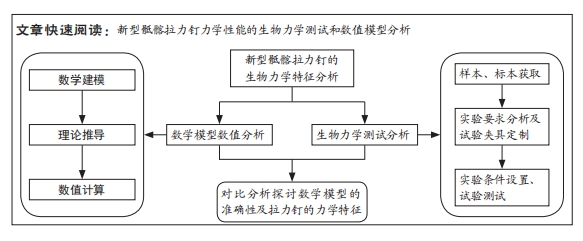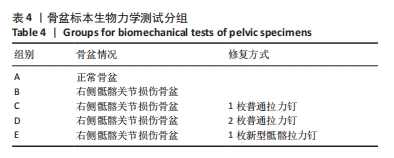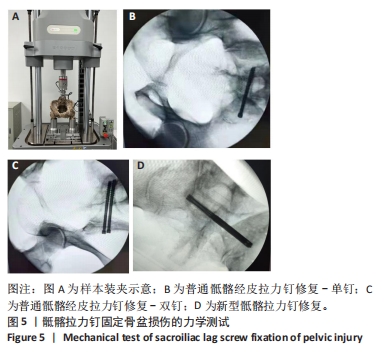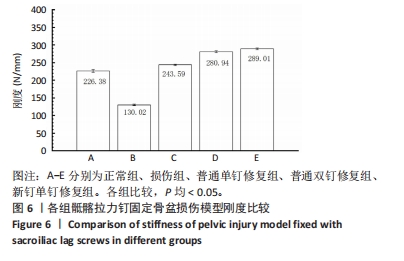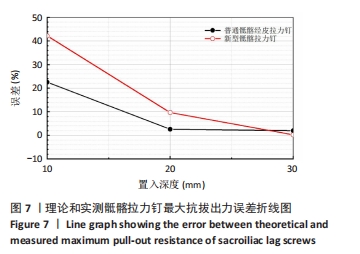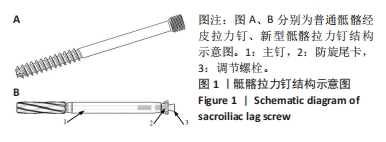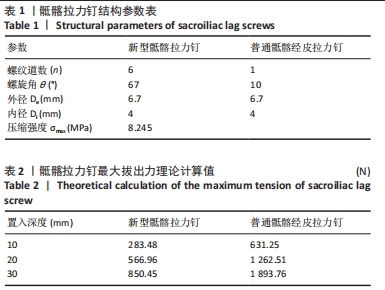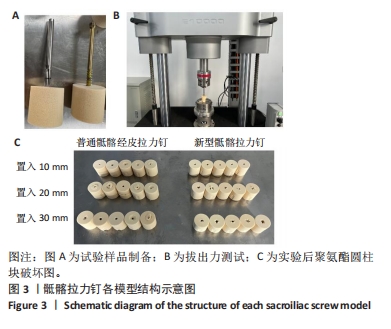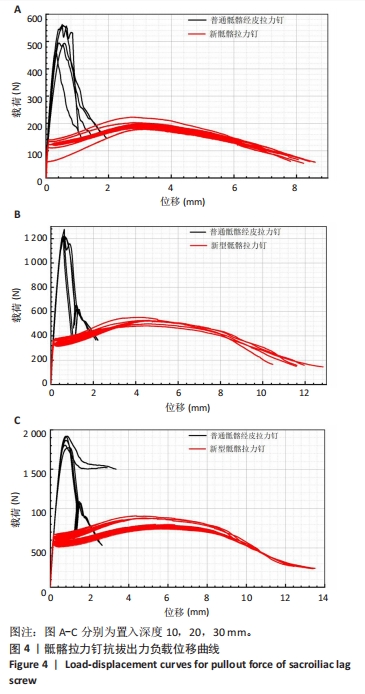[1] PATEL V. Sacroiliac joint injuries. Orthopedics. 2012;35(5):398-399.
[2] 贾德位,李仲,张立峰.骶髂损伤固定的研究进展[J].中国矫形外科杂志,2024,32(5):434-439.
[3] 童凯,王钢.骶髂关节复合体生物力学特征的研究进展[J].中华创伤骨科杂志,2018,20(3):223-227.
[4] 谭振,王光林.骨盆骨折后环损伤的诊断及治疗研究进展[J].四川大学学报(医学版),2017,48(5):655-660.
[5] JÄCKLE K, SPERING C, SEITZ MT, et al. Anatomic reduction of the sacroiliac joint in unstable pelvic ring injuries and its correlation with functional outcome. Eur J Trauma Emerg Surg. 2022;48(2): 1491-1498.
[6] FANG J, DONG H, LI Z. Comparison of curative effects between minimally invasive percutaneous lag screw internal fixation and reconstruction plate for unstable pelvic fractures. J Coll Physicians Surg Pak. 2020;30(1):28-32.
[7] 梁成,张麟麒,王冠,等.不同内植物修复单侧不稳定骨盆后环损伤的有限元及生物力学分析[J].中国组织工程研究,2024,28(9): 1336-1341.
[8] WU T, SU K, ZHANG YZ, et al. Biomechanical comparison of three kinds of fixation in fracture-dislocation of the sacroiliac joint. Technol Health Care. 2019;27(1):89-99.
[9] LEDONIO CG, POLLY DW, SWIONTKOWSKI MF. Minimally invasive versus open sacroiliac joint fusion: are they similarly safe and effective? Clin Orthop Relat Res. 2014; 472(6): 1831-1838.
[10] 贾德位,李仲,张立峰.骶髂损伤固定的研究进展[J].中国矫形外科杂志,2024,32(5):434-439.
[11] 廖文胜,丁强,王利民.H形钢板固定骶髂关节分离的生物力学评价[J].郑州大学学报(医学版),2013,48(4):530-533.
[12] RUDOLF L. Sacroiliac joint arthrodesis-MIS technique with titanium implants: report of the first 50 patients and outcomes. Open Orthop J. 2012;(6):495-502.
[13] 李洁冰.骶髂关节前路钢板螺钉固定术相关的解剖学研究[D]. 石家庄:河北医科大学,2016.
[14] 刘伟,宋远征,杨茂杰,等.前后入路与腹直肌外侧入路跨骶骨的髂骨间接骨板治疗骶髂关节脱位合并同侧骶骨翼骨折的效果对比研究[J].中华骨与关节外科杂志,2024,17(7):628-634.
[15] 高加智,辛杰,王洪玉.不同桥接组合式内固定系统重建骨盆后环稳定性的有限元分析[J].中国矫形外科杂志,2020,28(4):342-348.
[16] LEE CH, HSU CC, HUANG PY. Biomechanical study of different fixation techniques for the treatment of sacroiliac joint injuries using finite element analyses and biomechanical tests. Comput Biol Med. 2017; (87):250-257.
[17] TOYOHARA R, HIRAMUKAI T, KUROSAWA D, et al. Numerical analysis of the effects of padded pelvic belts as a treatment for sacroiliac joint dysfunction. Biomed Mater Eng. 2023;34(4):305-318.
[18] SHUI X, YING X, MAO C, et al. Percutaneous Screw Fixation of Crescent Fracture-Dislocation of the Sacroiliac Joint. Orthopedics. 2015;38(11): e976-e982.
[19] TIDWELL J, CHO R, REID JS, et al.Percutaneous Sacroiliac Screw Technique. J Orthop Trauma. 2016;30 Suppl 2:S19-S20.
[20] ZHAO Z, ZHENG G, CHU X, et al. Application of the pedicle axis view in percutaneous screw placement for type III fracture dislocation of the sacroiliac joint. BMC Musculoskelet Disord. 2023;24(1):248-252.
[21] 张文辉,王春丽,范立真,等.机器人辅助导航下骶髂螺钉置入的准确性[J].中国组织工程研究,2024,28(24):3845-3849.
[22] OSTERHOFF G, TIZIANI S, HAFNER C, et al. Symphyseal internal rod fixation versus standard plate fixation for open book pelvic ring injuries: a biomechanical study. Eur J Trauma Emerg Surg. 2016; 42(2):197-202.
[23] HANLON J, HUDSON CC, LITSKY AS, et al. Mechanical evaluation of canine sacroiliac joint stabilization using two short screws. Vet Surg. 2022;51(7):1061-1069.
[24] WELLE K, KHOURY M, PRANGENBERG C, et al. Minimally invasive lumbopelvic stabilization of sacral fracture and sacroiliac injury. Oper Orthop Traumatol. 2021;33(6):538-545.
[25] TOMLINSON J. Minimally Invasive Repair of Sacroiliac Luxation. Vet Clin North Am Small Anim Pract. 2020;50(1):231-239.
[26] GIANNIKAS KA, KHAN AM, KARSKI MT, et al. Sacroiliac joint fusion for chronic pain: A simple technique avoiding the use of metalwork. Eur Spine J. 2004;13(3):253-256.
[27] CARBONE J, SWINK I, MUZZONIGRO T, et al. Biomechanical Stability of Primary and Revision Sacroiliac Joint Fusion Devices: A Cadaveric Study. Global Spine J. 2022;12(1):45-52.
[28] YAO Z, LI L, ZHANG P, et al. Biomechanics evaluation of sacroiliac joint pain after lumbosacral fusion: A finite element analysis. J Orthop Res. 2023;41(4):875-883.
[29] ZUSMAN NL, WOELBER E, MCKIBBEN NS, et al. Acetabular fracture pattern is altered by pre-injury sacroiliac joint autofusion. Eur J Orthop Surg Traumatol. 2024;34(7):3423-3430.
[30] 梁成,刘晋珲,鲁梦婕,等.钛合金自攻骨钉力学方程验证及力学性能分析[J].医用生物力学,2021,36(3):371-376.
[31] BISWAS JK, MONDAL N, CHOUDHURY S, et al. A finite element study and mathematical modeling of lumbar pedicle screw along with various design parameters. J Orthop Sci. 2023;28(5):992-1003.
[32] ZOU R, ZHANG X, LI Y, et al. Biomechanical Evaluation of an Adaptive-Motion Pedicle Screw Fixation System: Experimental and Numerical Analysis. J Biomech Eng. 2023;145(11):111001.
[33] HERMAN A, KEENER E, DUBOSE C, et al. Simple mathematical model of sacroiliac screws safe-zone-Easy to implement by pelvic inlet and outlet views. J Orthop Res. 2017;35(7):1478-1484.
[34] PANAGIOTOPOULOU VC, OVESY M, GUEORGUIEV B, et al. Experimental and numerical investigation of secondary screw perforation in the human proximal humerus. J Mech Behav Biomed Mater. 2021;116: 104344.
[35] XIE S, CUI L, LIU J, et al. Impact of screw tip design on screw anchorage: mechanical testing and numerical simulation. J Orthop Surg Res. 2024; 19(1):447.
[36] KIM DG, MIN KIM S, KIM Y. Numerical simulation and biomechanical analysis of locking screw caps on clavicle locking plates. Medicine (Baltimore). 2022;101(30):e29319.
[37] HOLLENSTEINER M, SANDRIESSER S, BLIVEN E, et al. Biomechanics of osteoporotic fracture fixation. Curr Osteoporos Rep. 2019;17(6):363-374.
[38] FANG C, LAU TW, WONG TM, et al. Sliding hip screw versus sliding helical blade for intertrochanteric fractures: A propensity score-matched case control study. Bone Joint J. 2015;97-B(3):398-404.
[39] CHER DJ, RECKLING WC, CAPOBIANCO RA. Implant survivorship analysis after minimally invasive sacroiliac joint fusion using the iFuse Implant System(®). Med Devices. 2015;8:485-492.
[40] LI Y, LI W, BOBBERT FSL, et al. Corrosion fatigue behavior of additively manufactured biodegradable porous zinc. Acta Biomater. 2020;106: 439-449. |
